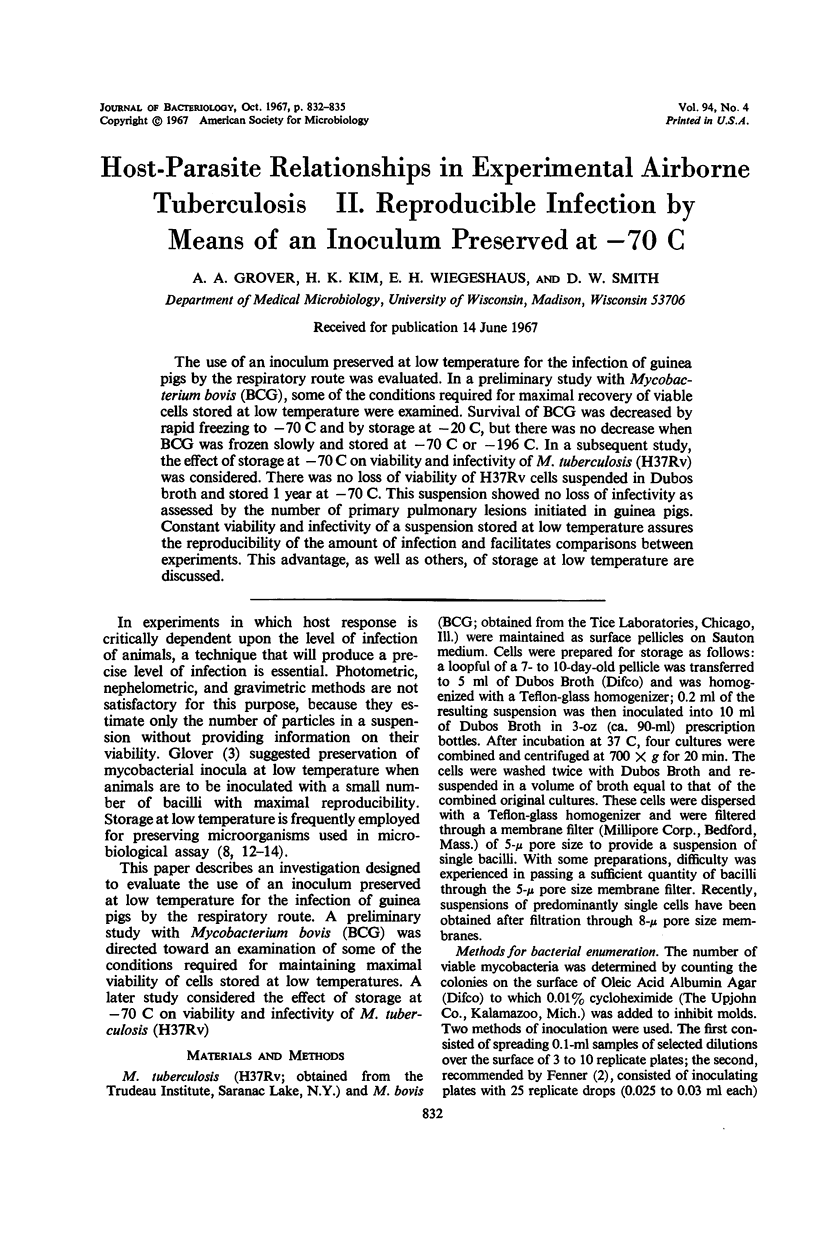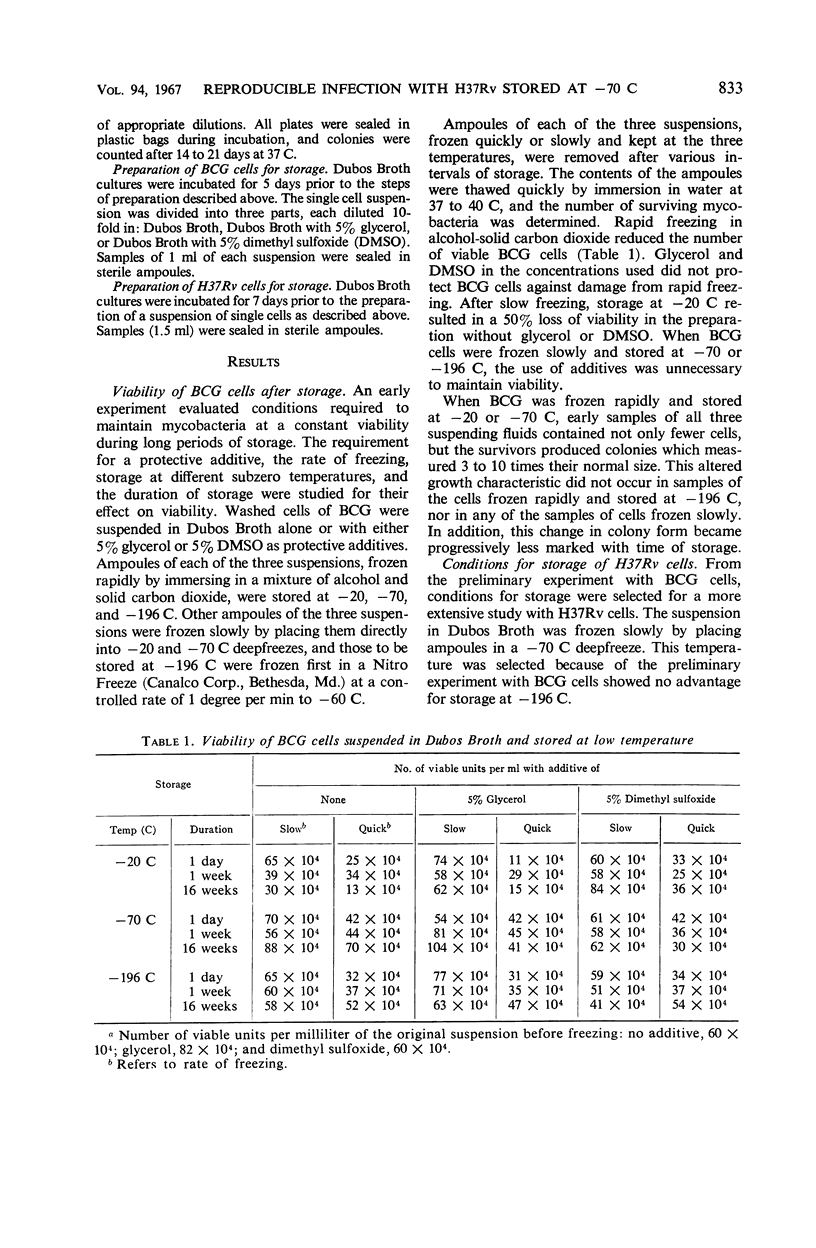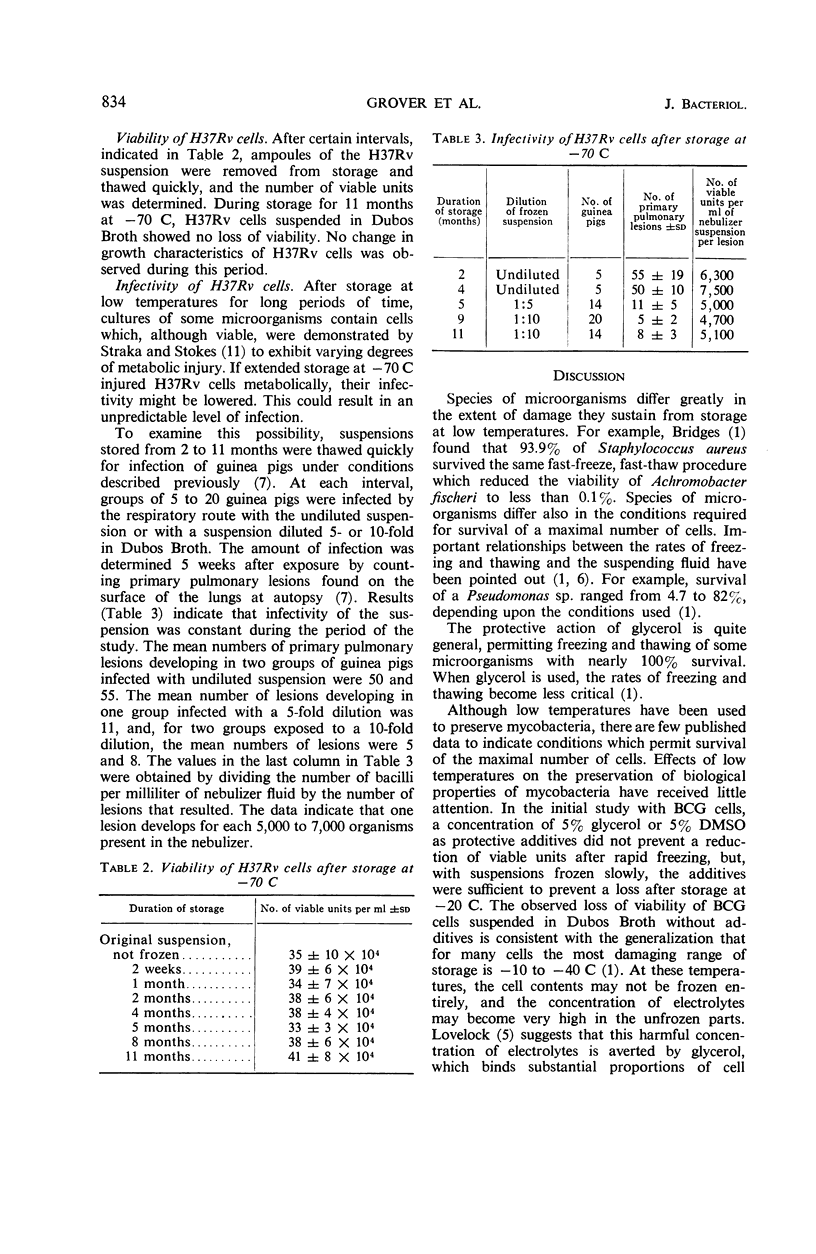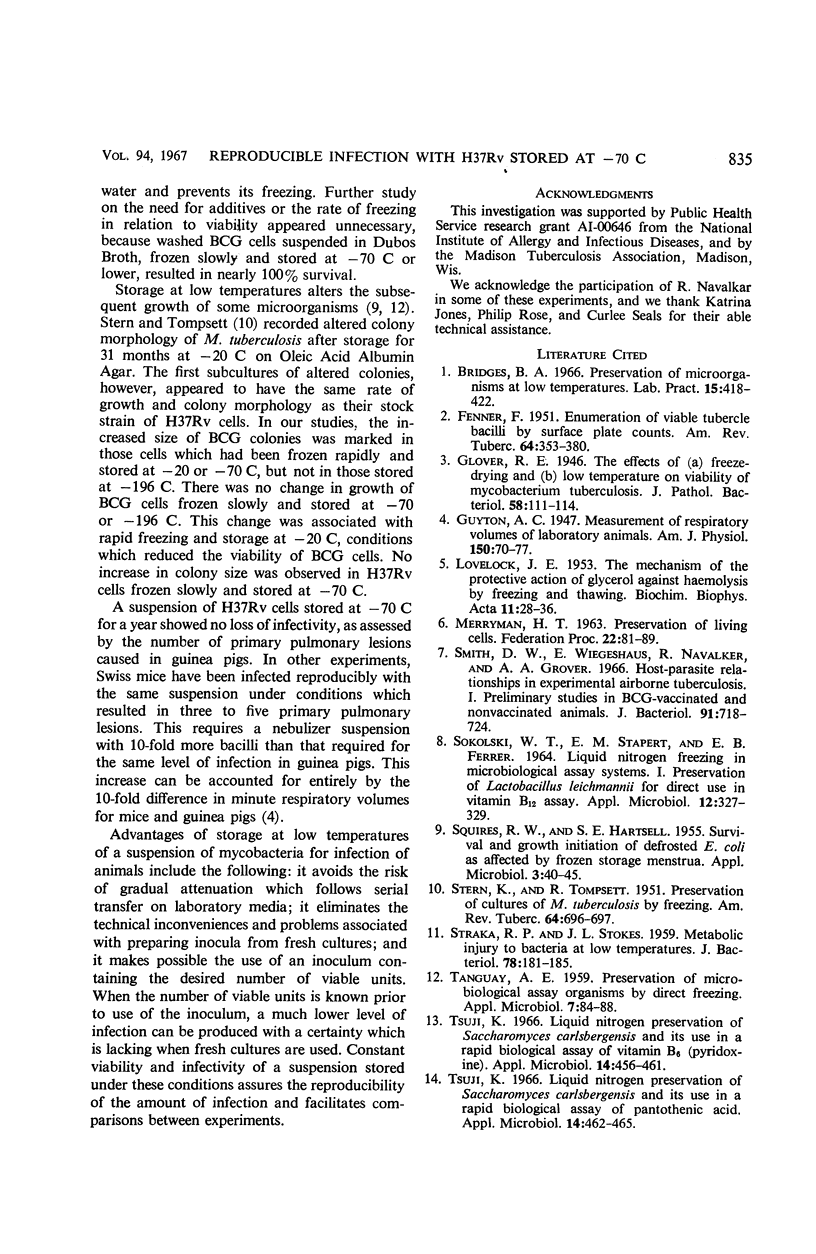Abstract
The use of an inoculum preserved at low temperature for the infection of guinea pigs by the respiratory route was evaluated. In a preliminary study with Mycobacterium bovis (BCG), some of the conditions required for maximal recovery of viable cells stored at low temperature were examined. Survival of BCG was decreased by rapid freezing to −70 C and by storage at −20 C, but there was no decrease when BCG was frozen slowly and stored at −70 C or −196 C. In a subsequent study, the effect of storage at −70 C on viability and infectivity of M. tuberculosis (H37Rv) was considered. There was no loss of viability of H37Rv cells suspended in Dubos broth and stored 1 year at −70 C. This suspension showed no loss of infectivity as assessed by the number of primary pulmonary lesions initiated in guinea pigs. Constant viability and infectivity of a suspension stored at low temperature assures the reproducibility of the amount of infection and facilitates comparisons between experiments. This advantage, as well as others, of storage at low temperature are discussed.
Full text
PDF



Selected References
These references are in PubMed. This may not be the complete list of references from this article.
- Bridges B. A. Preservation of micro-organisms at low temperatures. Lab Pract. 1966 Apr;15(4):418–422. [PubMed] [Google Scholar]
- FENNER F. The enumeration of viable tubercle bacilli by surface plate counts. Am Rev Tuberc. 1951 Oct;64(4):353–380. doi: 10.1164/art.1951.64.4.353. [DOI] [PubMed] [Google Scholar]
- LOVELOCK J. E. The mechanism of the protective action of glycerol against haemolysis by freezing and thawing. Biochim Biophys Acta. 1953 May;11(1):28–36. doi: 10.1016/0006-3002(53)90005-5. [DOI] [PubMed] [Google Scholar]
- MERYMAN H. T. Preservation of living cells. Fed Proc. 1963 Jan-Feb;22:81–89. [PubMed] [Google Scholar]
- SOKOLSKI W. T., STAPERT E. M., FERRER E. B. LIQUID NITROGEN FREEZING IN MICROBIOLOGICAL ASSAY SYSTEMS. I. PRESERVATION OF LACTOBACILLUS LEICHMANNII FOR DIRECT USE IN THE VITAMIN B12 ASSAY. Appl Microbiol. 1964 Jul;12:327–329. doi: 10.1128/am.12.4.327-329.1964. [DOI] [PMC free article] [PubMed] [Google Scholar]
- SQUIRES R. W., HARTSELL S. E. Survival and growth initiation of defrosted Escherichia coli as affected by frozen storage menstrua. Appl Microbiol. 1955 Jan;3(1):40–45. doi: 10.1128/am.3.1.40-45.1955. [DOI] [PMC free article] [PubMed] [Google Scholar]
- STERN K., TOMPSETT R. Preservation of cultures of M. tuberculosis by freezing. Am Rev Tuberc. 1951 Dec;64(6):696–697. doi: 10.1164/art.1951.64.6.696. [DOI] [PubMed] [Google Scholar]
- STRAKA R. P., STOKES J. L. Metabolic injury to bacteria at low temperatures. J Bacteriol. 1959 Aug;78:181–185. doi: 10.1128/jb.78.2.181-185.1959. [DOI] [PMC free article] [PubMed] [Google Scholar]
- Smith D. W., Wiegeshaus E., Navalkar R., Grover A. A. Host-parasite relationships in experimental airborne tuberculosis. I. Preliminary studies in BCG-vaccinated and nonvaccinated animals. J Bacteriol. 1966 Feb;91(2):718–724. doi: 10.1128/jb.91.2.718-724.1966. [DOI] [PMC free article] [PubMed] [Google Scholar]
- TANGUAY A. E. Preservation of microbiological assay organisms by direct freezing. Appl Microbiol. 1959 Mar;7(2):84–88. doi: 10.1128/am.7.2.84-88.1959. [DOI] [PMC free article] [PubMed] [Google Scholar]
- Tsuji K. Liquid nitrogen preservation of Saccharomyces carlsbergensis and its use in a rapid biological assay of pantothenic acid. Appl Microbiol. 1966 May;14(3):462–465. doi: 10.1128/am.14.3.462-465.1966. [DOI] [PMC free article] [PubMed] [Google Scholar]
- Tsuji K. Liquid nitrogen preservation of Saccharomyces carlsbergensis and its use in a rapid biological assay of vitamin B6 (pyridoxine). Appl Microbiol. 1966 May;14(3):456–461. doi: 10.1128/am.14.3.456-461.1966. [DOI] [PMC free article] [PubMed] [Google Scholar]


